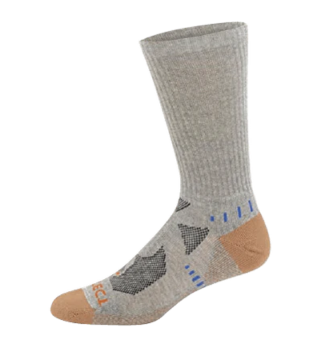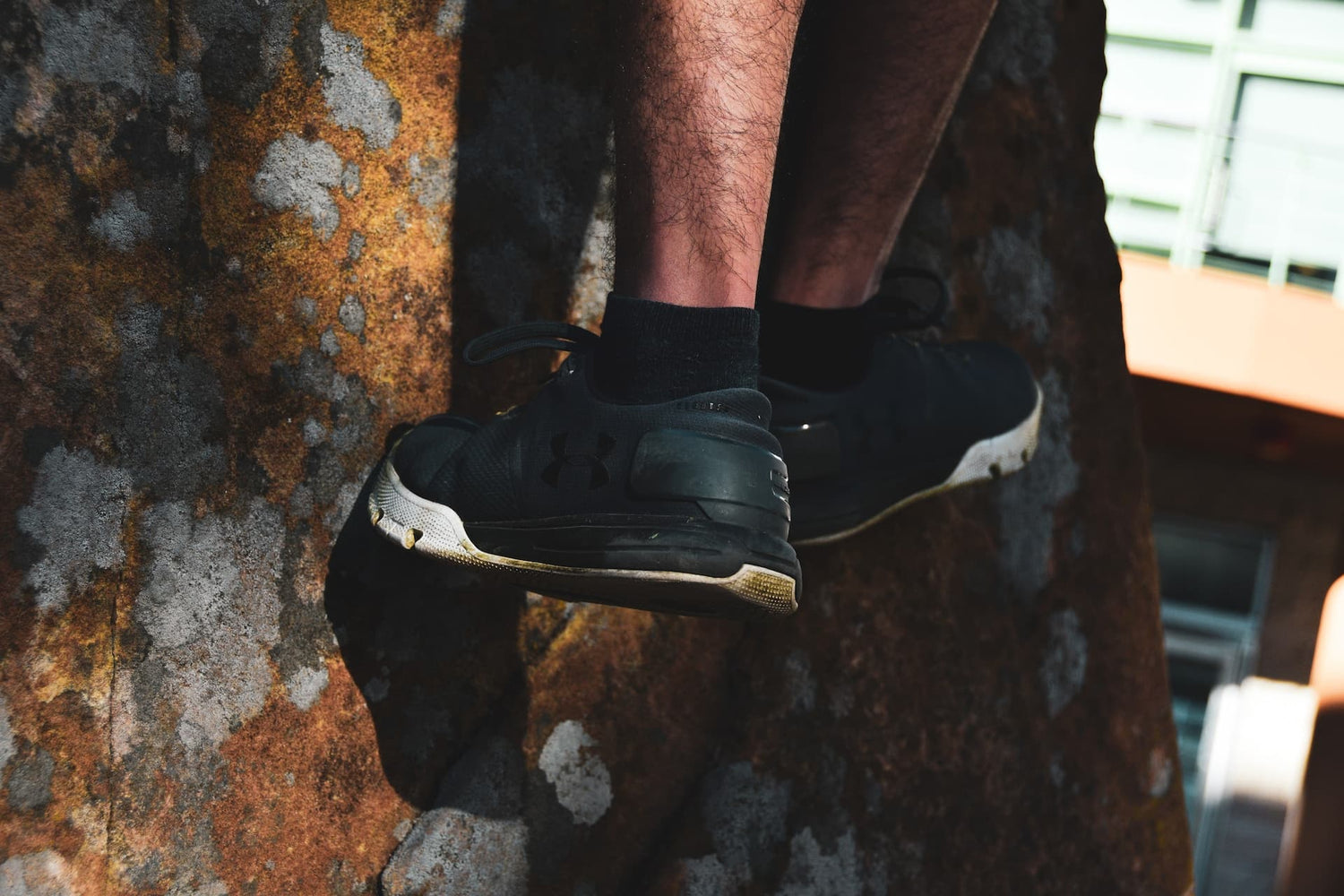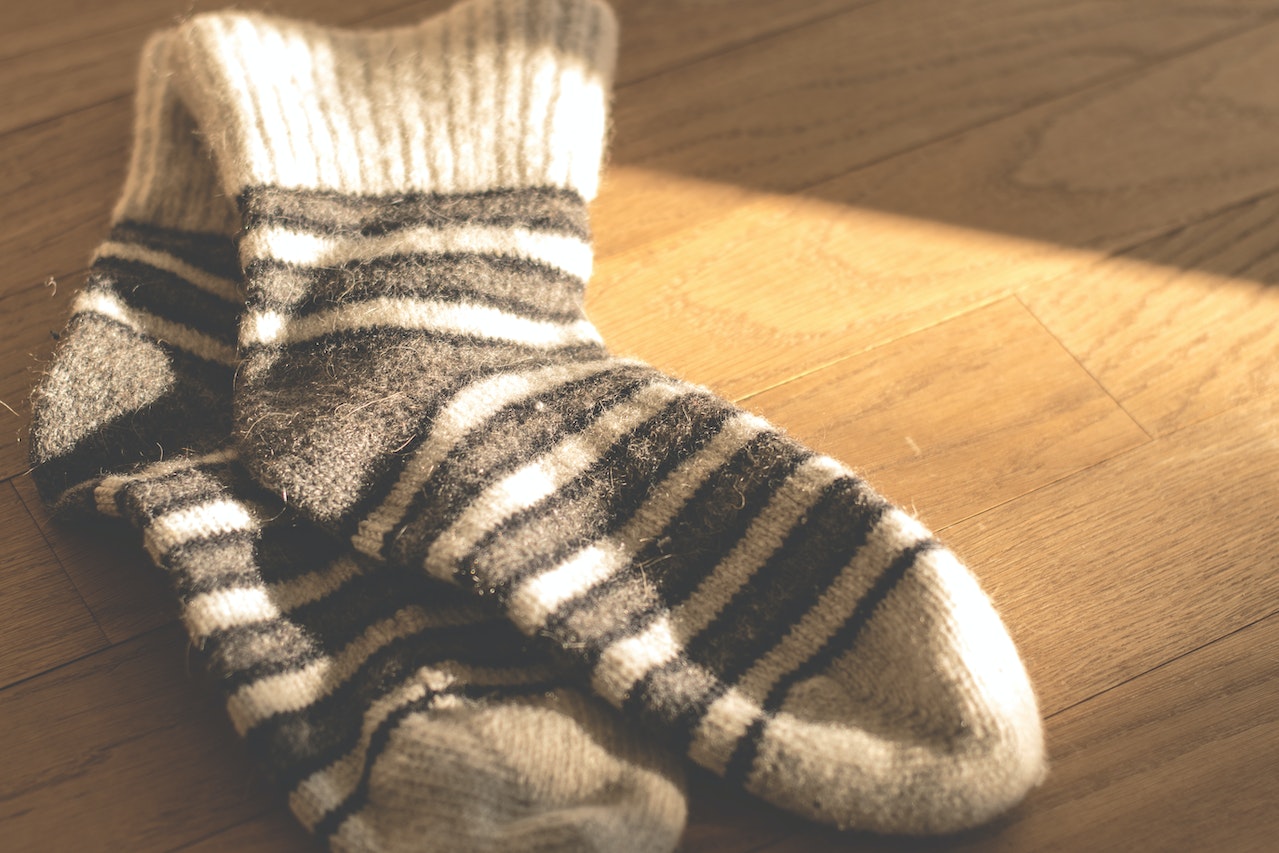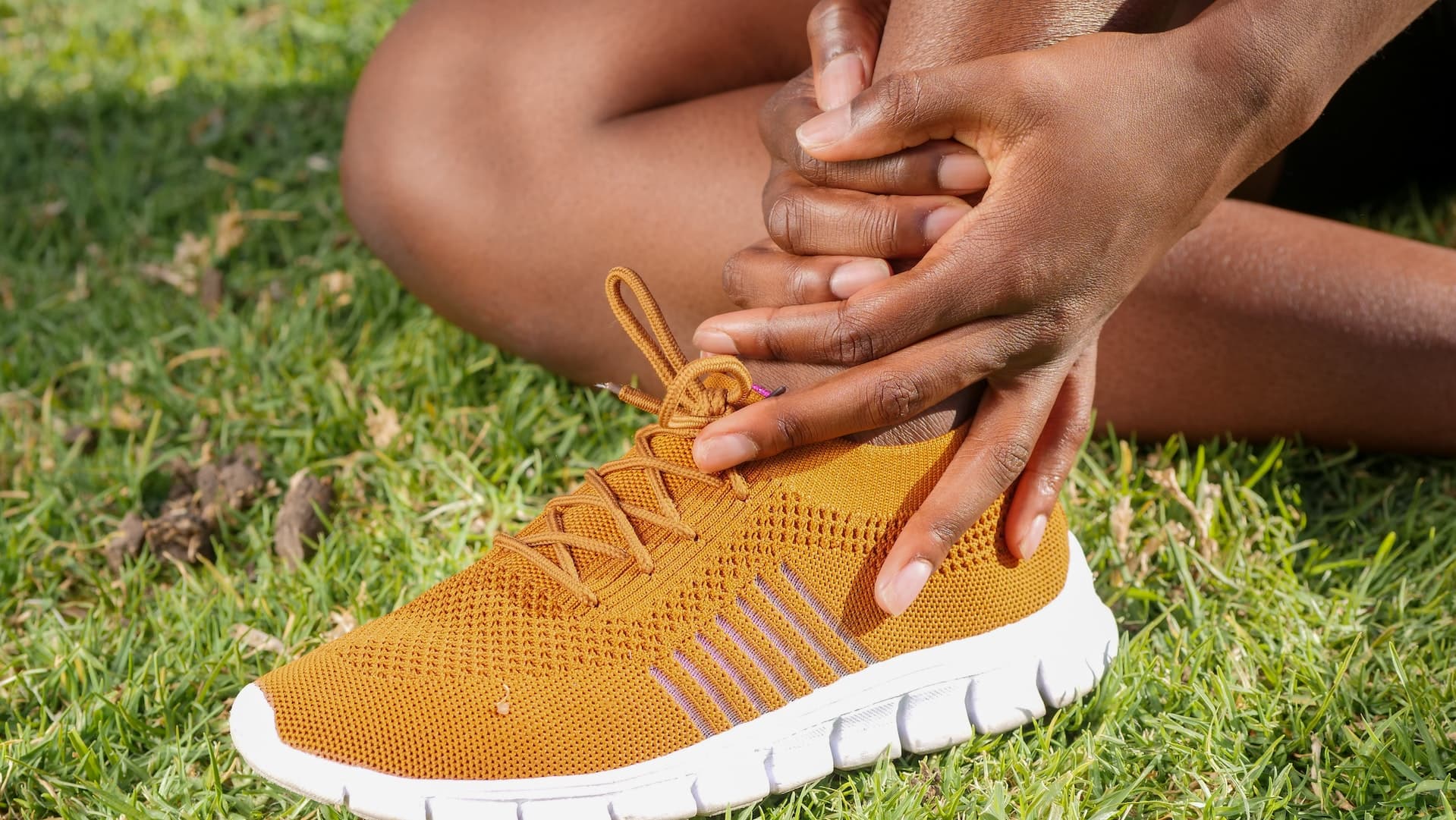
Athlete's foot is a prevalent fungal infection that affects the skin of the feet, typically between your toes, causing discomfort and irritation. It is often believed that wearing black socks can increase the risk of developing athlete's foot due to heat absorption and poor breathability.
However, that isn’t exactly the case.
By examining the impact of sock color, material, hygiene practices, and fabric selection, we can better understand how to prevent this common foot condition and promote optimal foot health.
Can Socks Cause Athlete's Foot?
Athlete's foot is a common fungal infection that affects the feet, causing symptoms such as itching, burning, and skin flaking.
The fungus that causes athlete's foot thrives in warm and damp environments such as locker rooms, swimming pools, and communal showers. However, a common misconception is that wearing black socks can increase your risk of developing athlete's foot.
Many people believe that black socks cause athlete's foot because they are commonly made of synthetic materials that do not allow your feet to breathe. This is not entirely accurate since most athletic socks are made of synthetic materials, regardless of color.
While it is true that synthetic materials do not allow for the same breathability that cotton does, it does not directly cause athlete's foot. Wearing damp or dirty socks dramatically increases your risk of developing athlete's foot by providing a suitable environment for fungi to grow and thrive.
That’s why keeping your feet clean and dry is essential by changing your socks regularly. It’s also best to completely dry off your socks before wearing them again. It should be noted that black socks do have a few benefits over white socks, like hiding sweat stains or dirt marks.
In general, sweat stains are less visible on darker-colored fabrics when compared to lighter-colored ones. Leading black socks to look more hygienic.
Color choice should come down to personal preference rather than health concerns since there isn’t any scientific evidence linking sock color with an increased risk of infections like athlete's foot; however, keeping up with good hygiene practices can reduce those risks significantly no matter what color you choose for your socks.
Do Black Socks Cause Athletes' Foot?
There is no evidence that black socks cause athlete's foot. Some people may assume that wearing black socks promotes the growth of fungi because they trap heat and moisture. While it is true that black absorbs more heat than white, that’s only one factor that could lead to athlete’s foot.
Sweating can occur regardless of the color of your socks, especially when you are wearing tight boots or shoes for a prolonged period, making any colored sock just as likely to cause athlete's foot compared to the next.
Are Black Socks Bad for Your Feet?
Black socks are popular thanks to their sleek appearance, but there are concerns about whether or not they are bad for your feet.
Poor-quality black socks with poor breathability may exacerbate pre-existing medical conditions like diabetes and peripheral artery disease by trapping moisture and bacteria that cause infections. However, it is worth noting that not all black socks are that poorly made.
Some brands, like Pro-Tect Socks, produce high-quality black socks with breathable materials that help keep your feet dry while still looking stylish.
Is It Better to Wear White or Black Socks?
White socks show dirt and sweat stains more easily than black socks, making them appear less hygienic. However, this doesn't mean white socks are worst than black socks. Choosing between white and black socks largely depends on personal preference and style. If you prefer the look of black socks or find them more versatile, go ahead and wear them.
Just be sure to take good care of your feet by washing your socks regularly and keeping your shoes clean and dry. If you're concerned about hygiene or have sweaty feet, white or other light-colored socks may be a better option for you.
Are Black Socks Bad for People With Diabetes?
White socks are generally recommended for people with diabetes because they allow for better visibility of any wounds or abnormalities on the skin of the feet. In contrast, black socks can hide knicks, scrapes, or even minor bleeding, making it more difficult to tell if you have a medical issue.
Do Black Socks Smell Worse Than White Socks?
Black socks don't necessarily smell worse than white socks. The sock's material and how often you wash them are critical factors for smelly socks. You should wash your socks after each use or at least every 2-3 days if you don't have easy access to laundry facilities.
Do Black Socks Make Your Feet Sweat More?
High-quality black socks don't make your feet sweat more than white socks. The material of the sock and the environment you wear them in are more important factors. Choose breathable fabrics like cotton and avoid thick synthetic materials, commonly used in cheaper black socks, to prevent excess sweating or foot problems.
How Often Should You Wash Your Black Socks?
Socks should be washed after each use to prevent the buildup of bacteria and fungi. This is especially important for those prone to conditions such as athlete's foot or nail fungus.
These conditions thrive in warm and moist environments, so wearing dirty socks can contribute to their growth. Additionally, washing your black socks regularly helps to keep them in good condition. Just be extra sure they’re completely dry before you put them on.
Conclusion: Black Socks Do Not Cause Athlete’s Foot
While black socks do not directly cause athlete's foot, cheaply made black socks can contribute to its development due to their darker color and tendency to hold onto moisture.
It’s essential for you to choose breathable fabrics, such as cotton or wool blends, and to change them regularly. This will help keep feet dry and prevent the growth of fungus and bacteria that lead to athlete's foot.
It’s also important to practice good hygiene habits like washing your feet regularly with soap and water, drying your feet off after a shower or exercising, and avoiding sharing shoes or socks with others. By making small changes in your sock choices and hygiene habits, you can help avoid uncomfortable and potentially dangerous fungal infections in your feet.






Leave a comment
This site is protected by hCaptcha and the hCaptcha Privacy Policy and Terms of Service apply.